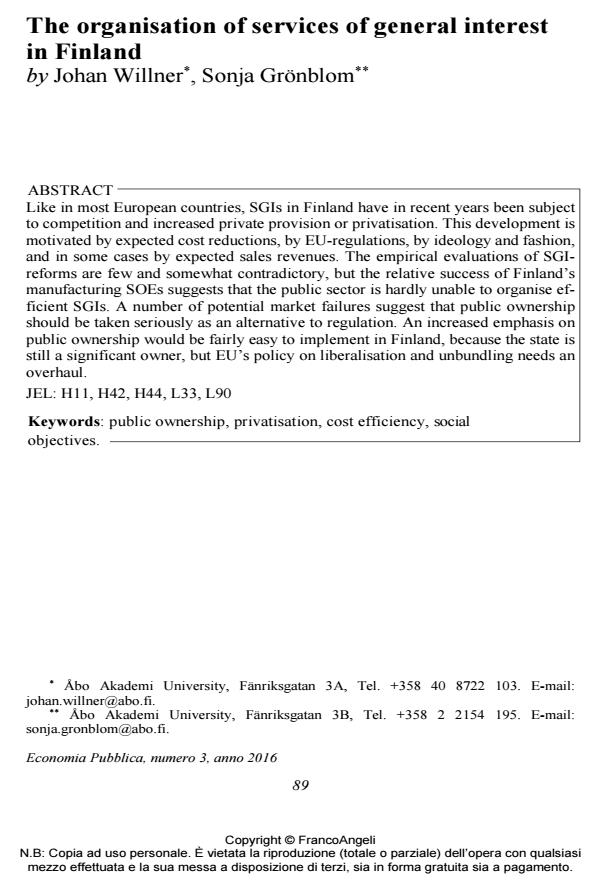The organisation of services of general interest in Finland
Titolo Rivista ECONOMIA PUBBLICA
Autori/Curatori Johan Willner, Sonja Gronblom
Anno di pubblicazione 2017 Fascicolo 2016/3
Lingua Inglese Numero pagine 28 P. 89-116 Dimensione file 278 KB
DOI 10.3280/EP2016-003004
Il DOI è il codice a barre della proprietà intellettuale: per saperne di più
clicca qui
Qui sotto puoi vedere in anteprima la prima pagina di questo articolo.
Se questo articolo ti interessa, lo puoi acquistare (e scaricare in formato pdf) seguendo le facili indicazioni per acquistare il download credit. Acquista Download Credits per scaricare questo Articolo in formato PDF

FrancoAngeli è membro della Publishers International Linking Association, Inc (PILA)associazione indipendente e non profit per facilitare (attraverso i servizi tecnologici implementati da CrossRef.org) l’accesso degli studiosi ai contenuti digitali nelle pubblicazioni professionali e scientifiche
Like in most European countries, SGIs in Finland have in recent years been subject to competition and increased private provision or privatisation. This development is motivated by expected cost reductions, by EU-regulations, by ideology and fashion, and in some cases by expected sales revenues. The empirical evaluations of SGI-reforms are few and somewhat contradictory, but the relative success of Finland’s manufacturing SOEs suggests that the public sector is hardly unable to organise efficient SGIs. A number of potential market failures suggest that public ownership should be taken seriously as an alternative to regulation. An increased emphasis on public ownership would be fairly easy to implement in Finland, because the state is still a significant owner, but EU’s policy on liberalisation and unbundling needs an overhaul.
Parole chiave:Public ownership, privatisation, cost efficiency, social objectives
Jel codes:H11, H42, H44, L33, L90
- Rationales, performance and governance of public entreprises. Editorial introduction Luc Bernier, Massimo Florio, Johan Willner, in ECONOMIA PUBBLICA 3/2017 pp.5
DOI: 10.3280/EP2016-003001
Johan Willner, Sonja Gronblom, The organisation of services of general interest in Finland in "ECONOMIA PUBBLICA " 3/2016, pp 89-116, DOI: 10.3280/EP2016-003004